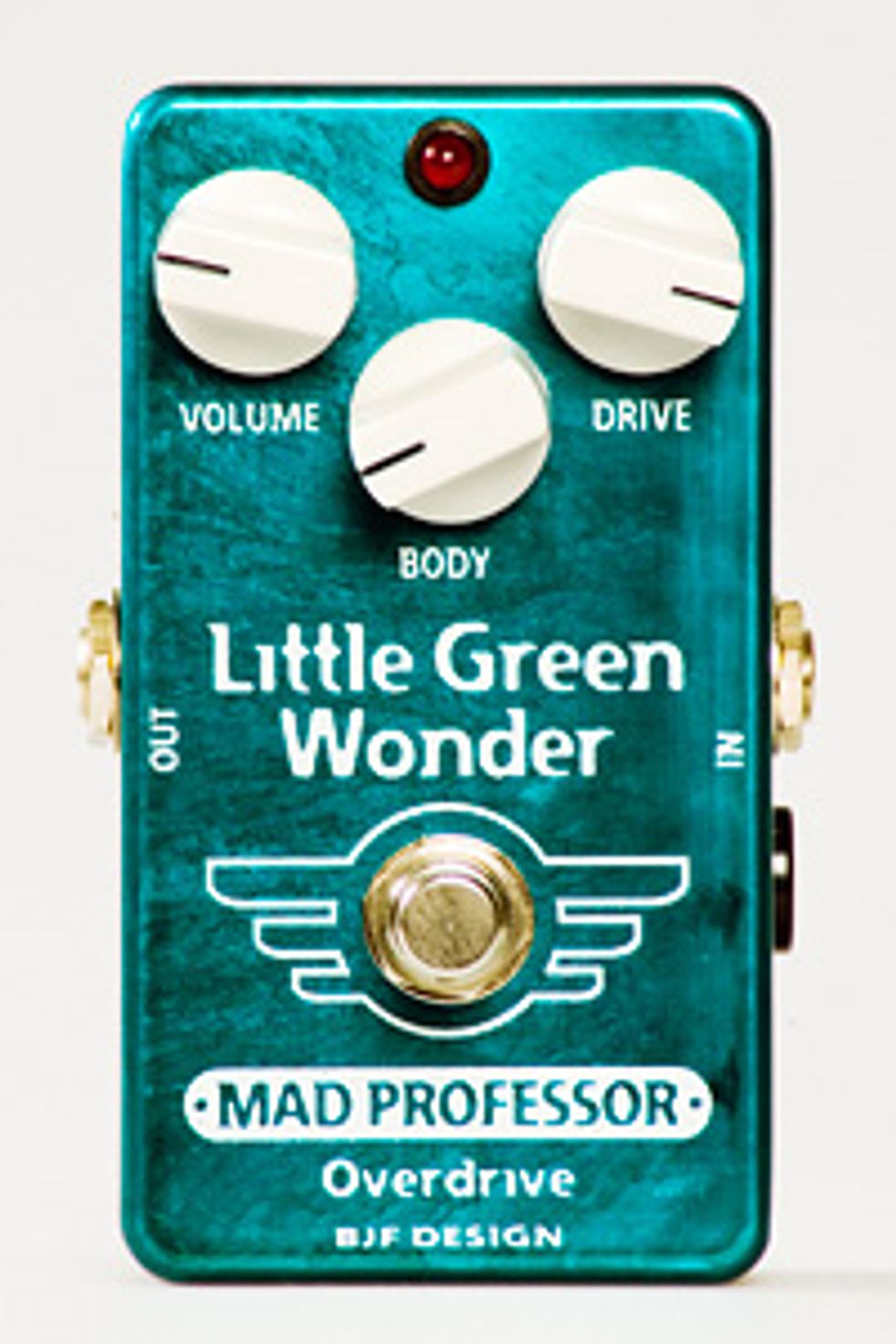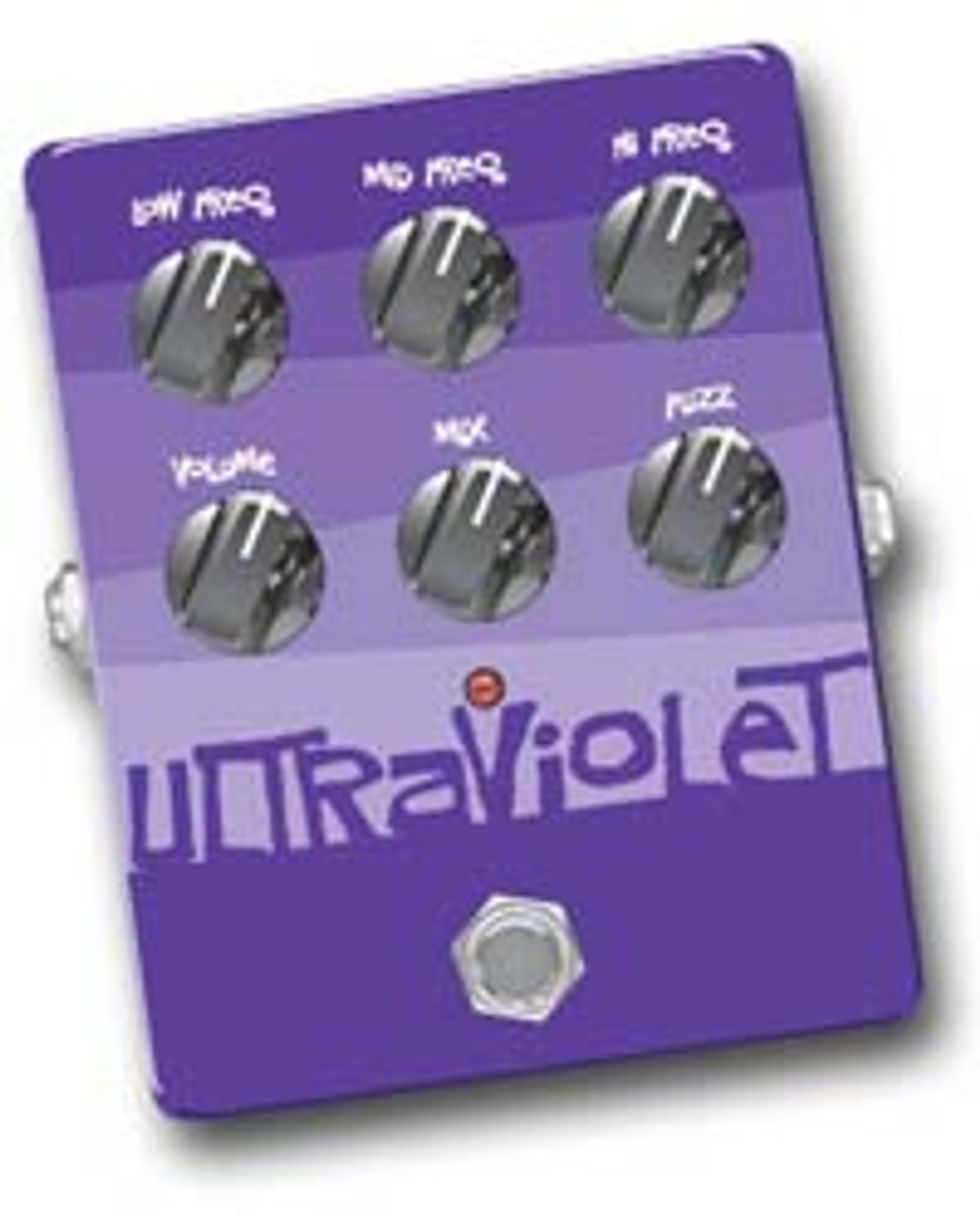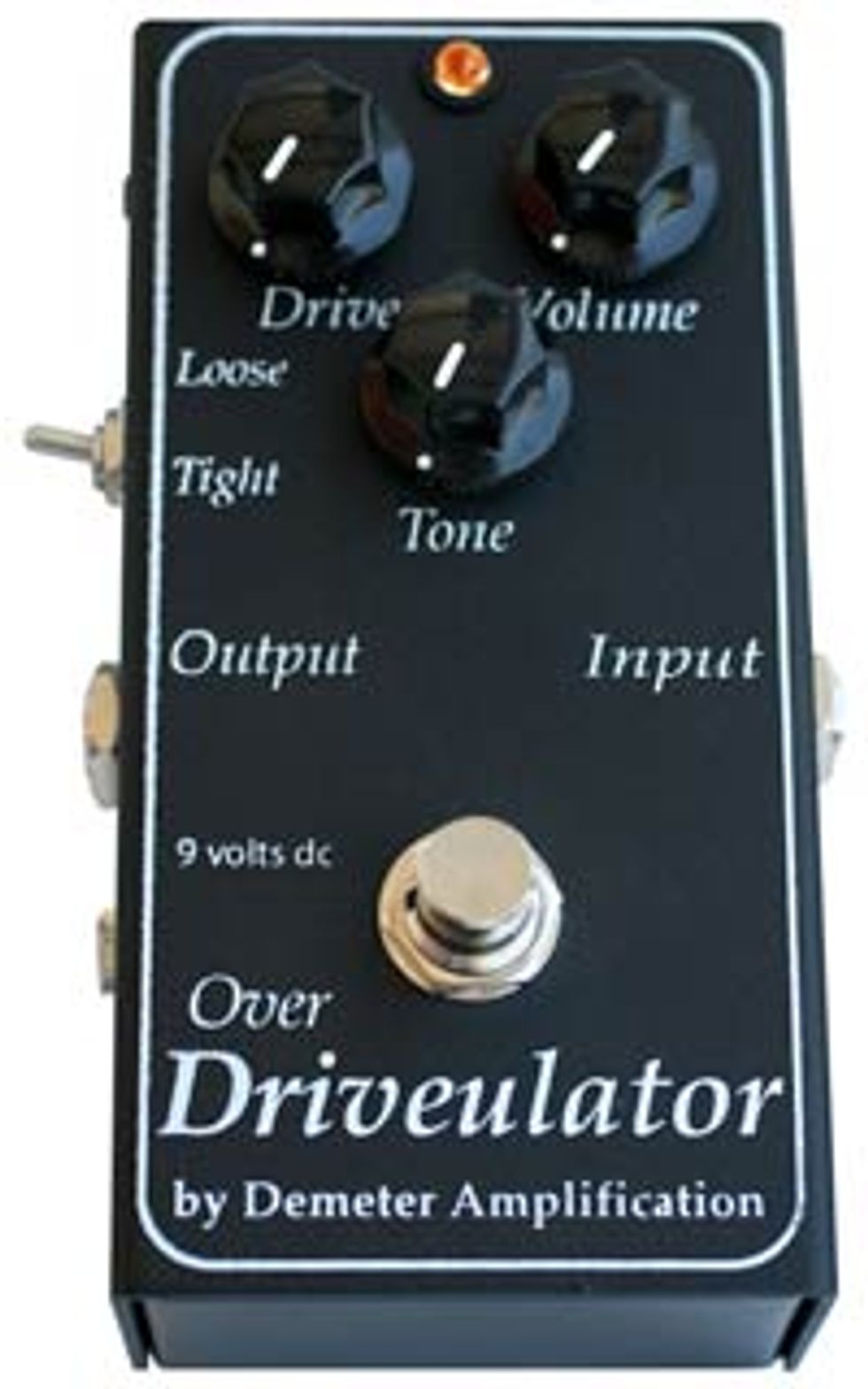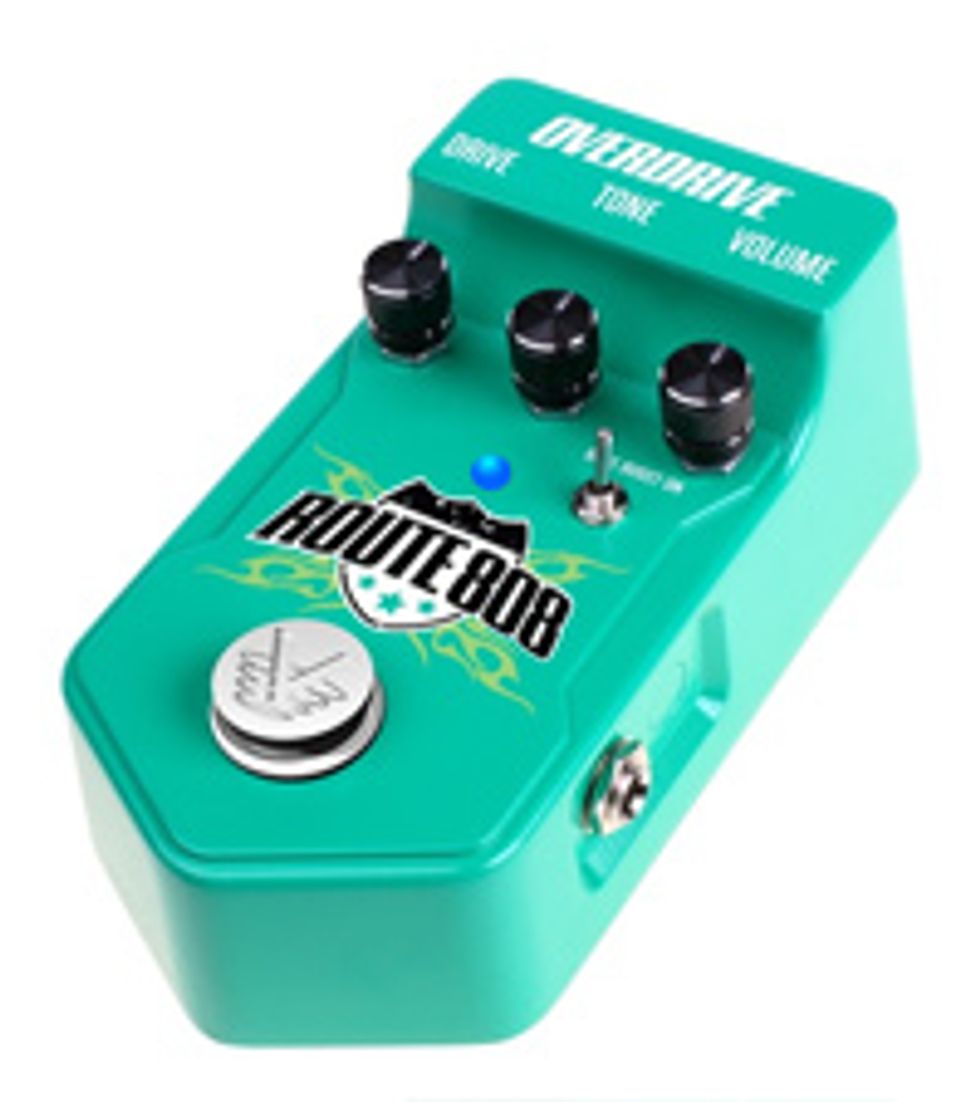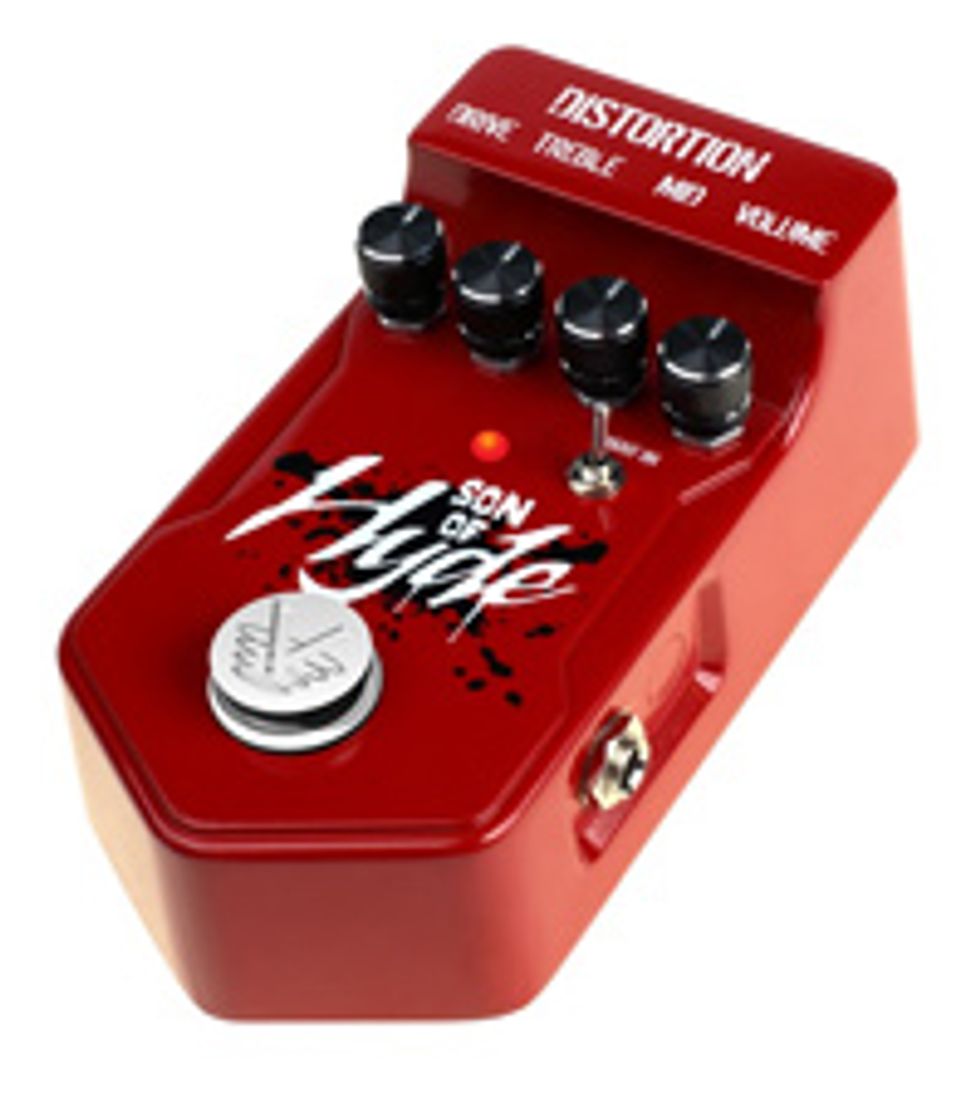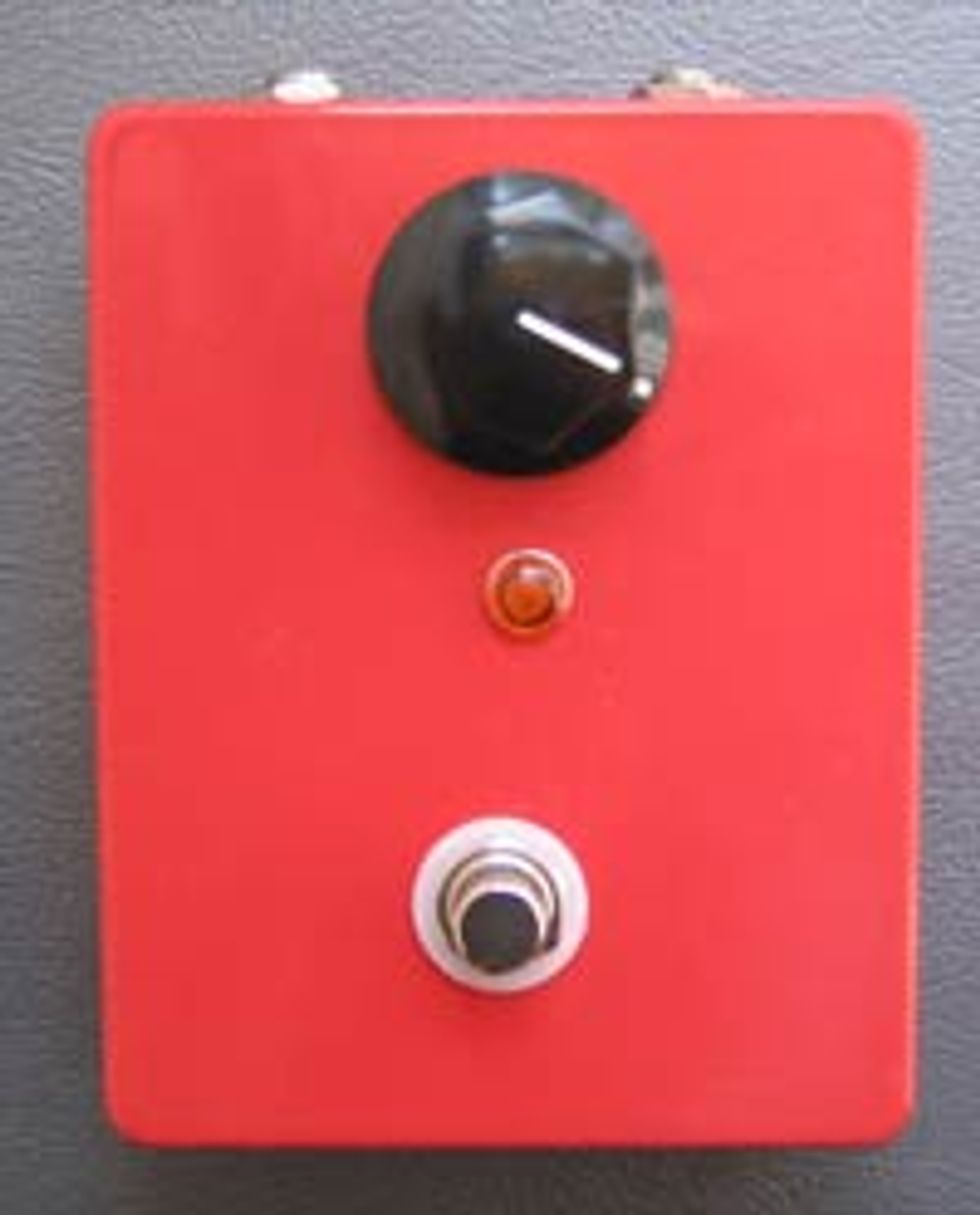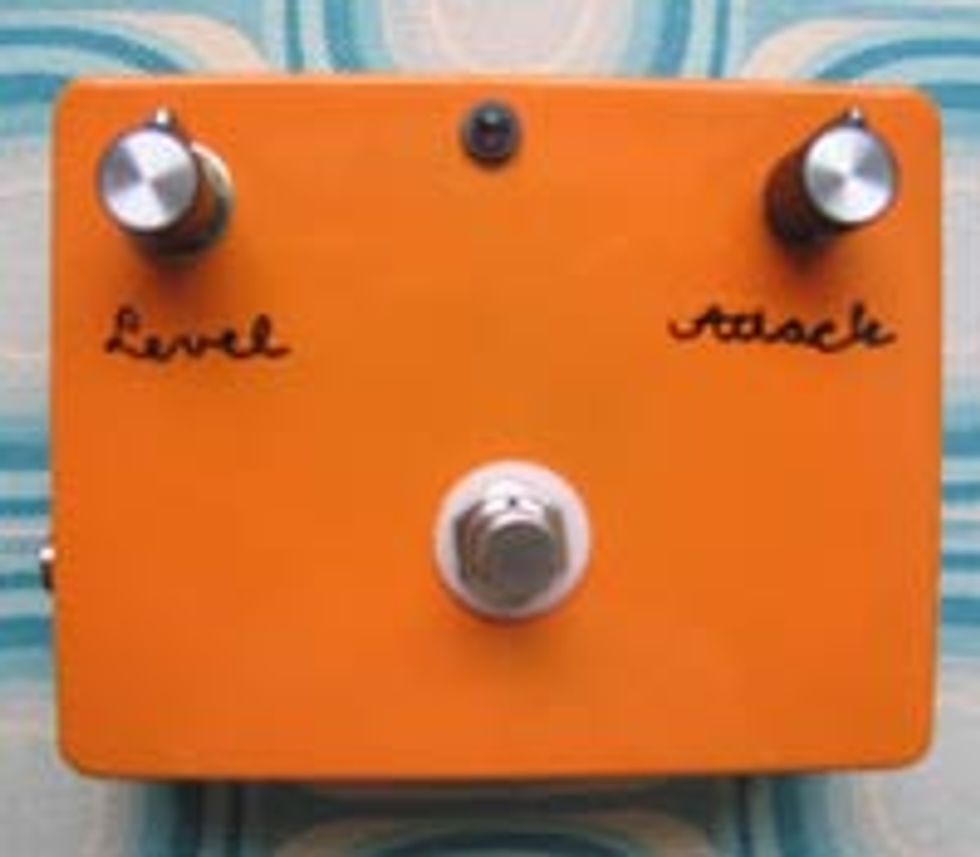More pedal reviews for stomp-happy tone-chasers: Visual Sound, Oohlala, Mad Professor & Champion
We have even more pedal reviews for those with stomp cravings. Check out our roundup for the first 28!
In this review:
Mad Professor Little Green Wonder
Oohlala Ultraviolet
Demeter OD-1 Overdrivulator
Visual Sound V2 Route 808
Visual Sound V2 Son of Hyde
Tim Champion Clapthena
Tim Champion Fuzzar-o
by Adam Moore Designer Bjorn Juhl describes the Little Green Wonder on the Mad Professor website as, “a TS-style pedal, but one for those who generally don’t like TS-style pedals.” After playing this pedal for a decent amount of time, you’ll quickly realize that Juhl has found perhaps the most effective way to describe it. While it’s near impossible to write a review of the LGW without a Tube Screamer comparison or three – even if you’re trying to block it out of your mind, the metallic green housing and the name itself will function to remind you what you’re playing – the LGW follows faithfully in the Mad Professor formula of pushing circuits towards the more refined side of the spectrum. From the very start, you’ll likely feel like you’re plugging into an old friend; the Volume knob acts as expected, and reveals a huge amount of headroom hidden beneath the surface – cranking the Volume with the Drive all the way back reveals a more than capable clean boost. The Drive knob takes things from a barely-there grit to full on Stevie Ray in a fairly tight range, and at all settings the LGW was exceptionally responsive and dynamic – it felt like it was truly a part of my amp, not an add-on in the signal chain. And while a good Tube Screamer feels like this too, the sheer transparency of the Mad Professor LGW makes this pedal the ideal partner for any number of the complex boutique amps currently dominating guitarists’ X-mas wishlists. With less compression and more warmth than the other green box, the LGW steps out of the way and lets your [insert pricey boutique amp here] do all the talking. But if the LGW was just a high-end clone, we probably wouldn’t be this excited. The Body control is the real secret here, expanding its tonal range and voice. While there’s always an element of midrange present in the LGW, you now have a lot more versatility in how to harness it. With the Body control at noon, you’ll hear that classic midrange “hump”; pushing it to the right adds in a treble boost and gives the LGW extra clarity and cut; turning it to left adjusts the boost downward into the low-mids, imparting an full figure to the signal, perfect for those smooth solos and cool autumn evenings. It cleans up perfectly with a turn of the volume knob, and plays nicely with humbuckers, as well. If you’re yearning for a TS-type pedal that is in reality a lot more, you’ll definitely fall in love with this Little Green Wonder. If you can swing the price tag, do yourself a favor and plug into the latest, greatest export from Finland. Buy if...
| |||||||||
by Adam Moore Is there such a thing as too much fuzz? It’s a big question, and one that will likely stir up strong feelings among players; there has always been a certain amount of joy in feeding a chain of fuzz boxes signals, watching the sound become filthier and filthier before it implodes under its own weight. But sometimes you need to scale things back, to harness the power of the fuzz box for more socially acceptable uses – clean it up for public consumption. While the question of too much fuzz may never be satisfactorily answered by researchers, there is no doubt an invisible line in many guitarists’ minds, however distant it might be, where we stop mid-take and say, “This is too much.” Oohlala Manufacturing is one of those companies continuing to toe that line between brilliance and absurdity, pressing forward with plans to cram as much fuzz into a confined space as is humanly possible – all while still sounding good, of course. Their line speaks for itself; boxes like the Soda Meiser can hang with the best of them, smartly transforming classics like the Big Muff and Ampeg’s Scrambler into a house blend of sonic destruction. Designs like the Synth Mangler manage to shoehorn multiple, purposely unstable fuzz circuits into playful packages, strongly making the case that there’s never such a thing as too much fuzz. Regardless, when I received the Ultraviolet, the company’s strongest brew of fuzz, I found myself asking that seminal, existential question over and over again. The Ultraviolet is, for all intents and purposes, a quad-channel fuzz with three active filter sections. And in case that didn’t register, quad means four, as in the Ultraviolet sends your signal through four parallel fuzz channels. Three of these channels are sent through active filter sections to expand the pedal’s range, each one tied to a different section of the frequency spectrum (lining the top of the box and marked as Low Freq, Mid Freq and Hi Freq). You then have the option to blend those sounds back in with the remaining, unfiltered fuzz channel (the Mix knob) for a combination that is downright phat. But it turns out that even though we can put a man on the moon, harnessing four channels of fuzz still remains somewhat elusive. While this pedal is thick and meaty, offering plenty of fuzzed-out muscle for true aficionados, there’s also a lot of complexity hidden inside – both in sound and in construction. Considering that the active filter sections interact to the smallest changes in your rig and playing, not to mention in relation to the other knobs, I found it a bit of a challenge to dial in exact sounds. I rushed things; I over-compensated. For every articulate, layered, harmonically intense fuzz I was able to coax out of the Ultraviolet, I probably encountered another one or two muddy settings, where I just couldn’t find the magic in the knobs. The Filter and Mix knobs can be a little confusing, and definitely take some time to settle into before you capitalize on their unique interplay, mixing the sounds and proportions of the various fuzz channels in the larger tone. The one Fuzz knob, controlling the general level of mayhem, is a bit of disappointment, if only in a psychological sense; for a box billing itself as four fuzzes in one, I’d love to be able to tweak four giant “FUZZ” knobs. That’s the kind of visual, tactile fun Oohlala is known for, and I wish there was more of it here. All that being said, fans of Oohlala know that their designs are made for exploration – a statement made clear in the manual. Part of the fun lies in figuring out just how the damn thing works – that’s why we keep coming back for more. While most pedal geeks twiddle Volume and Gain knobs into submission, Oohlala users are turning banks of controls, manhandling joysticks and generally having a ball. Drop the manual and start turning. Once you “get it,” you’ll be able to extract a maximum number of sounds out of this thing, everything ranging from tinny, lo-fi sounds all the way to fat-assed fuzzes that steamroll everything in their way. The Ultraviolet will best reward those with patience and a sound stuck in their head that they haven’t been able to replicate anywhere else. So how much is too much? If you got all the way to the end of this review and expected an answer, you’re probably the kind of person that loves to be told the answers, and that means the Ultraviolet probably isn’t for you. But if you’re into hands-on learning, hook up with the company doing the cutting-edge research and find out for yourself. Buy if...
| |||||||||
By Jordan Wagner Of all the tonal tools available to guitarists, overdrive pedals are certainly the most common, but the number of choices can be overwhelming. Diversity is a blessing, but it can also be debilitating when making a decision on a purchase. Finding that tube overdrive sound or that fat, blossoming distortion that perfectly congeals with the rest of the rig can sometimes feel like a never-ending task. Enter the Demeter OD-1 Over Drivulator, a very pleasing take on the simple design of the overdrive, with some added versatility to boot. Basically two overdrives in one, the OD-1 gives the guitarist the option of either the tight, responsive tone of light emitting diodes, or the spongy, loose feel and fuzzy sound of Germanium diodes via a Tight-Loose Switch. The circuit is controlled by a set of knob that all guitarists are familiar with: the simple layout of Volume, Tone and Drive. In addition, on the right side of the pedal is a trim pot to control the level of the output amplifier—higher settings boost the sound (which Demeter recommends for the Germanium setting, as it is not quite as loud as the LED mode), and lower settings bring down the output if the pedal is pushing the preamp too hard. With a Fender American Stratocaster into a 1973 Marshall Superbass halfstack, the OD-1 in Tight mode gave a very smooth, sharp tone. Unexpectedly, the sound seemed to have a “layered” quality to it: the distortion seemed to be riding under the natural clean tone of the guitar. It reminded me of that old multitrack technique of mixing some distorted amps with some clean ones. How they accomplished this in a pedal I don’t know, but I found myself playing for over an hour with just this setting. It is that good. Higher drive settings caused the tone to get a little too raspy, so that control was better set to the lower ranges. The Loose setting cut the volume rather noticeably, but that was quickly resolved with a simple turn of the trim pot. Germanium diodes usually provide a rather fuzzy tone on higher drive settings, and the OD-1 did not disappoint. Even with the hot humbuckers in my Flying V, I could still hear every note ring in open chords. The Demeter Over Drivulator is great for anybody looking for a good, crisp-sounding overdrive pedal. The LED diode mode can sound a little harsh when pushed higher, but when backed off the pedal reallyshines. With the addition of the fantastic sounding Germanium mode, the Demeter Over Drivulator just might be the cure to your overdrive blues. Buy if…
| |||||||||
By Michael Ross Based on the overdrive channel of the Jekyll & Hyde and Route 66 pedals, the Route 808 is designed to reproduce the sound of the coveted TS-808 Tube Screamer. I will let vintage fanatics parse how close it comes to the original, but the Route 808 does offer basically the same control panel (Volume, Tone, Drive) plus a Bass Boost, engaged with the mini-toggle. At the extreme CCW setting, Drive added virtually no extra distortion. At full volume this setting gave me a clean boost with a tone control—clean, but not transparent. Like its archetype, the Route 808 evidences the classic Tube Screamer low-mid bump, fattening Strat single-coils and humbucker bridge pickups alike. It also displays a distinct compression component, and cleans up nicely when the guitar volume is reduced, even with a fair amount of drive engaged. At the other end of the Drive spectrum I got a hard rock, if not metal, crunch. In one direction, Tone rolled off enough high end to tame the brightest of rigs, while in the other, it added a Marshall-like edge. Whether you use the bass boost will depend on your situation; at lower volumes it will give you that high volume girth. The 808’s appeal depends on how you feel about Tube Screamers. Proponents will love the extra sustain afforded by its tube-like compression, and the warm coloration of its distinctive voicing. Those looking for a transparent, less compressed and more dynamic pedal will want to look elsewhere. At hundreds less than an original TS-808, and half a hundred less than the reissue, you owe it to yourself to check out the Route 808. Buy if…
| |||||||||
By Michael Ross The Son of Hyde is the exact same distortion sound found in Hyde side of the Jekyll & Hyde pedal. It differs from the Route 808 largely in that it exhibits a British voicing to the more American 808, and sounds less compressed. This pedal also offers more gain, as well as Treble and Mid controls (as opposed to Tone only), and a Bright switch that replaces the overdrive’s Bass Boost. Though labeled a distortion, the Son of Hyde functioned fine as an overdrive in lower gain settings. Set with the Drive at 10 o’clock or below, and the Mid control likewise, the pedal turned into a dynamic, edgy, modern, blues machine that cleaned up nicely when the instrument’s volume was backed off. Goosing the gain and the midrange created some screaming classic sixties tones. With the Drive all the way up and the Mid all the way down, the Son of Hyde implied some modern metal sounds, but it probably doesn’t have enough over-the-top gain or mid-scoop to satisfy one’s inner Slipknot. What Son of Hyde does have is a noise gate that suppresses any hint of hiss when you stop playing, even at the highest, brightest distortion settings. It also produced enough low end to rattle the walls—engaging the Bright switch reduced this a little, leaving just enough bass to re-arrange my internal organs. Hard rockers and mild metal-heads would do well to check out this little monster. Buy if…
| |||||||||
By Gary Guzman Tim Champion originally made guitar pedals for his own use in his Sandpile recording studio in New York City. The guitar pedals are based on his personal favorites that deliver that classic vintage tone, and he is now sharing his creations with guitarists worldwide. Tim Champion Pedals are point to point, hand wired effects that feature vintage PNP Germanium transistors, aluminum casing, true bypass and 9 volt battery operation. The pedals are reminiscent of classic pedals of the past, although Tim has put his own spin on them. The Clapthena is a pedal that adds boost/distortion and more mid-range to your guitar tone. It is similar to a Dallas Rangemaster, which is the treble booster that guitarists such as Brian May and Eric Clapton used on their early recordings. That also explains how the pedal got its name – a combination of Clapton and the name of Tim Champion’s singer, Kathena. It can add a big kick to your lead or rhythm playing when it needs one. I found that this pedal works great with a bit of gain in front of it. If you are playing with a semi-clean tone, you can use it to give your leads a boost if you want more sustain. (Example 1) I also had to try the Clapthena the same way that Brian May used a Rangemaster treble booster. I plugged my Brian May Red Special guitar into the Clapthena, and sent it to my Vox Tonelab with the AC30 amp setting. I got pretty close to the May tone – warm, saturated and fuzzy. (Example 2) The Clapthena is designed to be used with small to medium sized tube amps. It can give you the mid-range boost or brightness that’s missing in your tone. Buy if...
| |||||||||
by Gary Guzman The Tim Champion Fuzzar-o pedal is a fuzz box based on the Tone Bender pedal, used by guitarists such as Jimmy Page and Jeff Beck. You only have to worry about two knobs here – Level, which controls the volume and Attack, which attenuates the high end. The tonality is big, harmonically rich fuzz with a fat sound. It’s more like a soft distortion instead of a hi-gain metal in-your-face kind of pedal. Just be prepared to rock with this thing – as it will ultimately overpower and destroy any wimpy new age or smooth jazz tracks! The pedal found itself between my Gibson Firebird and my Fender Deluxe amp, and proceeded to throw some dirt into their relationship. I didn’t feel the need to crank the Level and Attack all the way. With the Level at about 3 o’clock and the Attack at about 2 o’clock, I had plenty of thick distortion to work with. (sound example 1) I also tried different guitars with the Fuzzar-o, and it responds well to either humbuckers or single coil pickups. It definitely gave my Strat a shot of steroids that made it bigger and more threatening! (sound example 2) The Fuzzar-o is versatile enough for the tone to be as warm or as biting as you’d like. It offers warm, thick distortion without being harsh. Buy if...
| |||||||||
